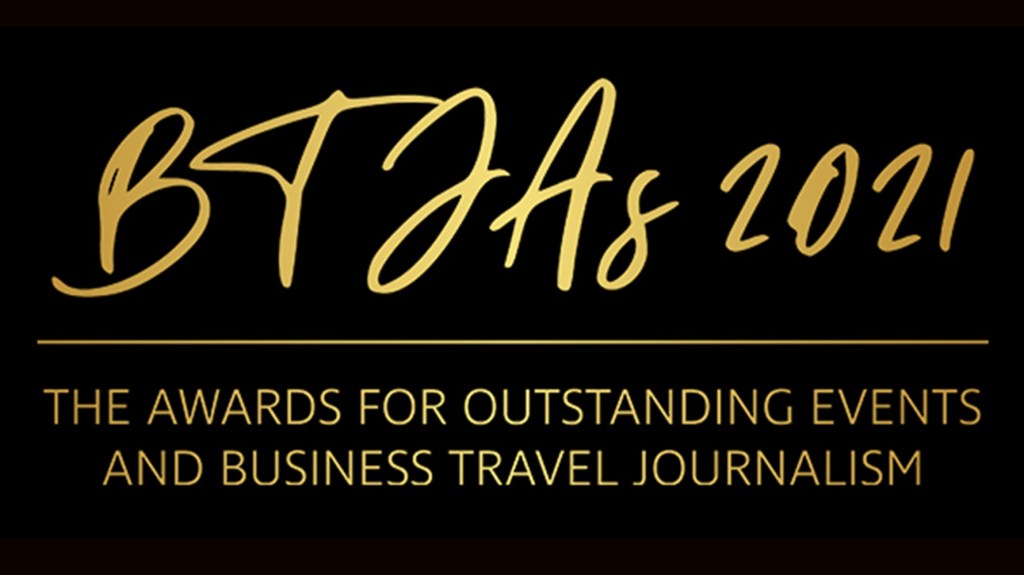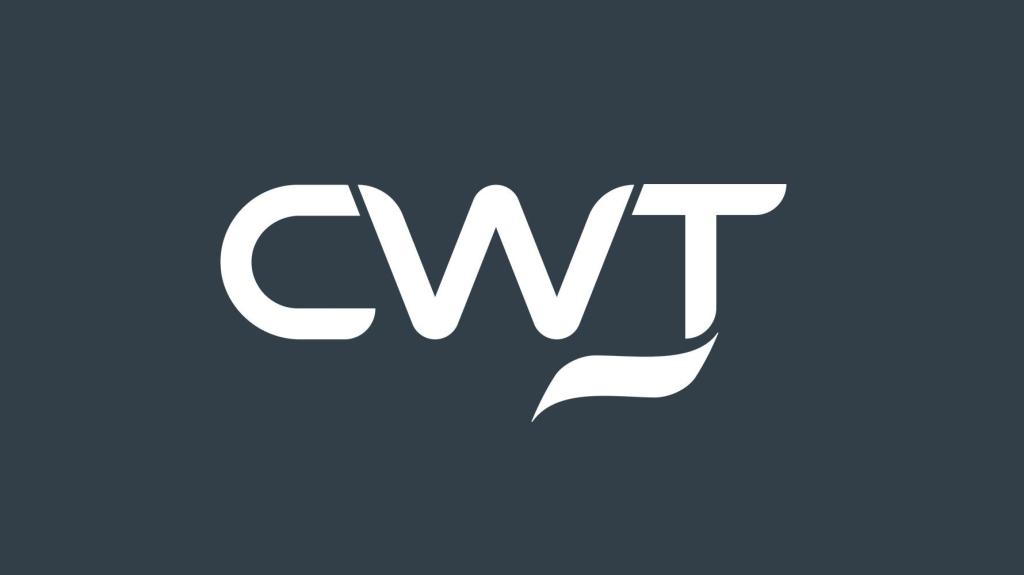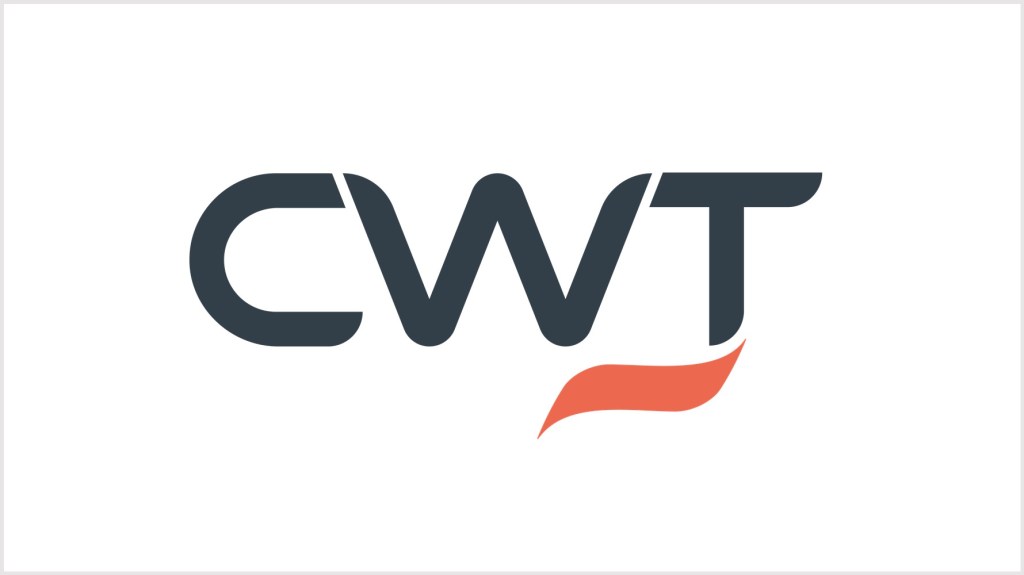Introducing the latest myCWT product and service enhancements
Building on our digital, omnichannel myCWT platform, our new products and services will simplify travel management for you and your employees – anytime, anywhere, anyhow.
Note: Featured services may not be available in your country at this time. Please reach out to your CWT representative for more details.
Hear from Chief Product Officer, Erica Antony as she shares the key product highlights of 2024, along with the key areas driving innovation.
-

2040: Baseline, Boom or Bust
As we enter an era of rapid transformation and unprecedented challenges, it is essential for travel managers, meeting & event planners, and corporate decision-makers to look ahead and frame our current strategic thinking with a clear vision of the future. Business travel and meetings and events (M&E) are poised for significant change over the next decade and a half, driven by a complex interplay of sustainability goals, technological advancements, evolving work models, and geopolitical dynamics.
In this paper to mark the 10th anniversary of our Global Business Travel Forecast, we explore, for the first time, a long-term vision of the future and potential trajectories through three distinct scenarios, each offering insights into how these forces should affect policy-making, budgeting and priorities. By examining these scenarios, we can better understand the diverse possibilities that lie ahead and the strategic imperatives required to thrive in each potential future.
Based on trajectory data analysis and interviews with industry leaders, behaviorists and climate tech founders, this forward-looking approach enables us to anticipate changes, strengthen our strategies, and make informed decisions that align long-term objectives. It is through this lens of foresight and adaptability that we can build resilience, seize opportunities, and navigate the complexities of the future.
We invite you to reflect on the insights presented, and consider how your organization can prepare for the opportunities and challenges that lie ahead. Together we can ensure that travel and meetings remain catalysts for growth, scalability and sustainable practices.
- Scenario development is both an art and a science
- Megatrends Shaping the Future of Business Travel, Meetings and Events
- Sustainability goals the new crux of corporate policy
- Technology Revolutionizes Travel Management
- Modern work models spark new travel patterns
- Changing demographics open doors to new opportunities
- Three Scenarios: Base case, boom and bust
- Future-proofing strategies

-

CWT GBTA Global business travel forecast 2025
When it comes to pricing, global business travel has finally reached an enduring, higher baseline. Prices will continue to rise in 2025, but only moderately, so expect a period of normalized growth.
However, this pricing environment, one of marginal gains and price regularity, is fragile. Global leisure travel has now realized a lot of its pent-up demand, while corporate travel has been resurgent, with 2024 edging at preCovid levels.
There are many factors at play, whether its volatile oil prices, labor costs and constraints, inflationary pressures, and geopolitical factors. As this elevated baseline edges upwards, albeit marginally, travel budgets will come under increased scrutiny, especially as travel patterns and attitudes change.
It’s why business travel can’t be viewed in a silo, and the true value to an organization must be fully realized. This forecast can help with those calculations.

-

Capitalize on emerging technologies in corporate travel
Technological advancements are accelerating at an unprecedented pace. How will emerging innovations like Generative AI, blockchain, and self-sovereign identity (SSI) transform corporate travel?
BTN and CWT probed global CEOs, travel managers, industry consultants and tech experts on the promises, questions, and expectations these innovations raise and how they are set to reshape traveler experience, cost control and service delivery in corporate travel and events.
Download and discover
- The technologies that will have the greatest impact on corporate travel in the next 2-5 years
- How these emerging technologies are poised to control costs, enhance service and security, and boost efficiency
- The critical challenges, opportunities, risks and roadblocks each innovation raises
- What travel managers, buyers and experts anticipate from these innovations

-

Meet Kari Wendel, Global Vice President, Strategic Customers CWT Meetings & Events
Kari Wendel leads strategic and enterprise customers, and global operations for CWT Meetings & Events. She has been with the company for more than 11 years.
We talk to Kari about the trends shaping the meetings and events industry, how to listen more and talk less, and why it’s important to be selective about the questions you include in your RFP.
Can you tell us about your role?
I am lucky to lead the most talented Meetings & Events team in the industry. We work with larger customers with centralized meeting strategies and large events & incentives to deliver amazing results on a daily basis. I was hired in 2010 to build and lead our Strategic Meetings Management (SMM) offering as well as to start our SMM consulting practice. Over this time my role expanded and became global enabling the development of our strategic account planning processes as well as key partnerships such as the first ever partnership in Japan for SMM service delivery.
Strategic meetings management is the management of enterprise-wide meetings processes, spend, volume, standards, suppliers and data to achieve measurable business objectives that align with an organization’s strategic goals. It’s just like travel management for meetings.
What do you see as the most important trends and/or developments that will shape the meetings and events industry in the next 5 years?
Without a doubt, the hybrid meeting will reign supreme for years to come. The last two years have taught us that we really can work virtually and accomplish key goals and objectives as we collaborate remotely, and that some meetings can be successfully delivered in virtual or hybrid format without undermining their impact.
Additionally, the chatter about sustainability is now a roar and all parts of the supply chain are focused on doing their part to progress in this area. Meetings and events provide a unique vehicle for the achievement of key sustainability initiatives and its time has certainly come.
Beyond the immediate view we will continue to see a merging of travel and meetings teams and strategies with a focus on Total Meetings Management where every type of meeting – from simple to high touch incentives – derives significant benefit from the SMM program.
What accomplishment are you most proud of in your career?
I’m most proud of the industry thought leadership I built and delivered during more than 10 years of significant volunteer work. From being a leader in the creation of the discipline now widely known as SMM or Strategic Meetings Management, leading several committees, councils and boards that fed this industry leadership, and designing and teaching the only professional industry certification in SMM. Not only was this personally and professionally fulfilling but it also supported my career progression here at CWT M&E – a bonus buy if you will!
What skills are vital in your job?
Leadership, perseverance, and a crazy need to solve complex problems. We are a global organization that was made up of dozens of country organizations just a few short years ago. The challenges inherent in moving to a global focus while maintaining that critical country and regional level nuance is not for the faint of heart. We have to stay focused on big goals while being flexible with solutions…and then the landscape changes. But I always say, it’s better to be busy than bored. It keeps us on our toes in the quest to deliver amazing results on a daily basis to our customers while driving high levels of internal engagement across teams.
How do companies and organizations need to adapt to meet changing behavior and values?
Change seems to be the norm these days and our ability to embrace it rather than run from it is paramount. We need to listen more and talk less. The simple act of asking a few high-level questions – what’s working/not, what’s great/not – is crucial.
And then it’s important to let the conversation flow. You can derive a level of detailed insight and feedback that no survey can touch. Keeping a pulse on the changing value of our customers and team members enables us to adapt strategies and build new solutions that connect and ensure the continued forward progress of our joint objectives.
What do you think are the key considerations when looking out for a new M&E provider?
Finding a partner that “fits” your own company’s culture and business approach is mission critical. Does that partner have a proven track record of success that matches your goals and objectives? Do they have teams that can help you frame a vision and then achieve it? Can they support all of your changing needs and will they deliver strategic help to advance your strategies through a very unknown 12 – 24 months as we move out of the pandemic?
As a former buyer, I also found that in the search for partners a few strategies proved highly valuable. First, ensure you get to know the potential bidders for your business before you enter the highly controlled RFP process. You can accomplish this through an RFI or simply through socialization and meetings in advance. Second, be very clear about the services you are bidding and have an established strategy that underpins that vision. Last but certainly not least, throw out the 300+ questions from your typical RFP that will not actually inform your decision. You should only need between 20 – 30 key questions to evaluate supplier options and finalize your selection.
Visit CWT Meetings & Events
-

2021 Business Travel Journalism Award (BTJAs) winners revealed
CWT, the Business-to-Business-for-Employees (B2B4E) travel management platform, proudly announces the winners of its 2021 Business Travel Journalism Awards (BTJAs), honoring exceptional journalists and editors from national, consumer, broadcast, and trade media worldwide. Out of hundreds of entries, an independent BTJA judging panel unanimously selected eleven winners for their exemplary and innovative business journalism over the last year.
The ‘Editorial Team of the Year award’ was won by BTN’s global editorial team for their insightful features which artfully unpick pertinent industry issues such as their superb ‘Sustaining the Future supplement’ and their delivery of challenging topics, with both analytical depth and creativity.
Bev Fearis from The Business Travel Magazine was honored as ‘Editor of the Year’. In her first year as editor she made significant strides at the magazine resulting in a brand new website, refreshed magazine and the launch of various new initiatives to interact with their audience, including social media, podcasts, and videos. Rhys Jones from Head for Points was awarded ‘Best Newcomer’. Rhys’ great passion for aviation and in-depth knowledge of the industry are reflected in his well-informed pieces peppered with detailed statistical insights and analysis.
The ‘New Media’ award was introduced for the first time this year and scooped by Mark Frary from BTN Europe for his ‘Week in Review’ podcast series which unpicks pressing issues with poise and urgency.
Gillian Upton won the ‘Industry Trends’ award for her article on the imperative of post-pandemic sustainability for The Business Travel Magazine. Matthew Parsons from Skift won the ‘Technology award’ for his piece on how corporate travel is moving towards a more open ecosystem, in which certain types of technology need to be plugged in. The ‘Ground transportation award’ went to BTN Europe’s contributor Rob Gill, for his feature on how car rental has become more important than ever as we emerge from Covid.
Awards also went to Simon Calder from The Independent for his visionary piece on seaplanes having a bright future as pioneers of electric aviation, Hannah Brandler from Business Traveller for her investigation into the hotel guest experience during the pandemic and the BBC’s Mike MacEacheran for his piece on the environmental impact of plastics in Amsterdam’s canals.
Contributor for BTN Europe Amon Cohen won the specialist award for the most insightful analysis and commentary on the post-pandemic return to travel.
“The 2021 Business Travel Journalism Awards once again uncovered new and exemplary talent in business travel writing along with a raft of new ideas from more established journalists,” said Julian Walker, CWT’s Head of External Market Communications and PR. “The entrants proved skilful in characterizing the main drivers and developments of a complex and dynamic industry.”
Administered and curated by CWT, the BTJAs recognizes distinguished business travel as well as meetings and events reporting for a general audience. Now in its 18th year and open to journalists worldwide, the BTJAs saw a significant influx of entries this year, submitted from across four continents, with the winners selected by an expert judging panel of business travel and meetings managers, industry experts, and respected editors.
The full list of 2021 BTJA winners are:
- New Media: Mark Frary, BTN Europe
- Best Newcomer: Rhys Jones, Head for Points
- Editor of the Year: Bev Fearis, The Business Travel Magazine
- Features Journalist of the Year Accommodation: Hannah Brandler, Business Traveller
- Features Journalist of the Year Air: Simon Calder, The Independent
- Features Journalist of the Year Destination: Mike MacEacheran, BBC
- Features Journalist of the Year Ground Transportation: Rob Gill, BTN Europe
- Features Journalist of the Year Industry Trends: Gillian Upton, The Business Travel Magazine
- Features Journalist of the Year Technology: Matthew Parsons, Skift
- Editorial team of the Year: BTN
- Special Award – Return to travel/Meetings & Events: Amon Cohen, BTN Europe
Read the winning entries on the BTJAs website or watch the announcement on video.
CWT is a leading global partner in business travel, meetings, and events. Operating across six continents, we deliver sustainable, tailored solutions that help organizations connect, engage, and thrive in an evolving world. Our myCWT platform integrates advanced technology with human expertise to simplify travel and enhance traveler and attendee experiences. Extensive global coverage, seamless data integration, AI-driven analytics, and carbon-conscious travel tools enable businesses to optimize their travel and meetings programs while delivering measurable value.
With 150 years of industry experience and a deep commitment to partnership, CWT collaborates with clients to shape the future of business travel and events, making them more efficient, responsible, and impactful.
-

Blue skies ahead: 3 factors shaping air travel and pricing in 2022
Amidst a healthy job market in many countries and changing attitudes to work-life needs and sustainability, travel buyers need to look at how to balance the desires of their staff with budgeting and building their travel programs.
While many are keen to travel again – Ernst & Young’s Work Reimagined survey found that 67% of respondents across 16 countries would like to travel for business moderately to extensively after the pandemic – we’re still in uncertain times.
The GBTA CWT Global Business Travel Forecast 2022 released this week looks at the cost of travel and the trends shaping the future of business travel. Here are three things to look out for when planning your program.
Pent-up demand for leisure travel
After 18 months cooped up at home and with cash saved up, vacationers (where restrictions have lifted) are keen to get back on the road.
In normal years, summer leisure demand is replaced by business travel that typically picks up in the fall as leisure travel dissipates. This trend was not the case in 2021, with some travel being delayed until 2022.
Pandemic legislation could increase fares on some routes
“Infection rates and legislation around whether people can come in and out of countries will impact the ability for airlines to plan around load factors, schedules and capacity,” says Richard Johnson, Senior Director CWT Solutions Group.
A surge in bookings caused by changed entry requirements – as seen in the US in November – will require swift capacity increases and present price inflation opportunities by airlines.
Australia is a current case-in-point. Airline seat capacity was off 68% in early November 2021 while at the same time prices rose significantly, driven by a mismatch of Australians unable to travel for more than 18 months and a strict cap on entering the country.
Rail as an alternative to short-haul flying
Climate-conscious travelers may prefer rail over short-haul flights in increasing numbers. France has already moved to ban domestic flights on routes that can be traveled by train within two-and-a-half hours. There’s the additional consideration of end-to-end travel time. A short haul flight may take an hour but factor in taxis to and from an out-of-town airport and check-in times, and rail may prove the more attractive option, particularly in Europe.
So far the shift to rail has happened where it serves as a good alternative to air travel. High-speed rail projects – currently with long lead-times – could boost demand. It’s possible that the introduction of new lower cost services on existing lines may cause downward pricing pressure in some markets. Many European operators have plans to launch services outside their home markets.
Image credits: Adobe Stock
-

CWT announces two Executive Leadership Team appointments
Nick Vournakis to lead the global customer team and Derek Sharp to lead the global traveler experience team
CWT, the Business-to-Business-for-Employees (B2B4E) travel management platform, today announced the appointments of Nick Vournakis as EVP and Chief Customer Officer and Derek Sharp as EVP and Chief Traveler Experience Officer. Both positions will report to Michelle McKinney Frymire, Chief Executive Officer (CEO) of CWT and serve as members of the company’s Executive Leadership Team (ELT). Both appointments are effective 1 December 2021.
“I am thrilled to have Nick and Derek join the ELT, having so successfully led the customer and RoomIt teams respectively,” said Michelle McKinney Frymire, CWT’s CEO. “Separating Customer and Traveler Experience into distinct functions will flatten our leadership structure and bring greater focus to our strategic initiatives moving forward. This also aligns the business units with our recently announced investment plans. Nick and Derek’s breadth and depth of experience and leadership talents make their appointments a natural fit for our team.
“At the same time, I am sad to announce that Niklas Andreen will be leaving CWT. The transformation that he and his team have achieved positions us for ongoing success and I extend my thanks and deep gratitude to him for his friendship, leadership and contributions to CWT. I speak for us all when I wish him the warmest of best wishes for the future.”
Immediately prior to this appointment, Nick Vournakis was Managing Director, Global Customer Development, before which he was President, US Military & Government. He joined CWT in January 2000 and his other senior roles in the company have included responsibility for North American Air Solutions, and managing our Canadian operations. Nick spent four years with EY Global Consulting services having been awarded a BA in Economics at Miami University.
Derek Sharp was Chief Operating Officer for RoomIt, CWT’s global hotel platform, prior to this appointment, and previously ran CWT Meetings & Events. He spent eight years at Travelport in various senior management, strategy and consulting positions, as he has with HP Enterprise Services, EDS, UPS and Bain & Company. Derek holds an MBA from the Tuck School of Business at Dartmouth College and a BA in Political Science from Texas A&M University.
Ms. McKinney Frymire added, “As CWT embarks on this exciting journey forward, I thank all of the teammates who have worked diligently over the last 18 months ensuring a bright future beyond the pandemic. With our recapitalization complete, and our new leadership team in place, we are excited about a bold future, one rooted in our rich heritage as we celebrate 150 years in travel in 2022.”
CWT is a leading global partner in business travel, meetings, and events. Operating across six continents, we deliver sustainable, tailored solutions that help organizations connect, engage, and thrive in an evolving world. Our myCWT platform integrates advanced technology with human expertise to simplify travel and enhance traveler and attendee experiences. Extensive global coverage, seamless data integration, AI-driven analytics, and carbon-conscious travel tools enable businesses to optimize their travel and meetings programs while delivering measurable value.
With 150 years of industry experience and a deep commitment to partnership, CWT collaborates with clients to shape the future of business travel and events, making them more efficient, responsible, and impactful.
-

A green good time: Sustainable incentives in Asia
Having slogged through trying times, employees around the world are in need of a major morale boost. It comes as no surprise then that of CWT Meetings & Events’ 53% global increase in demand for the first half of 2022 from 2021, much of it is for incentive events.
Amidst a healthy job market and a need to bring staff together, incentive events will be more important than ever for engaging and rewarding employees.
At the same time, sustainability is a top concern. People want to have a good time but not at the expense of community and planet.
In the first of a series of blogs in which we ask CWT Meetings & Events leaders about sustainable events destinations in their region, we speak to Petrina Goh, Director, CWT Meetings & Events, Singapore.
Are you seeing an increased interest in Asia?
Yes. Travelers are more aware of their social impact after Covid but momentum is a concern. Pent-up demand and the travel & events industry’s slow recovery are expected to reboot pre-pandemic behaviour focused on large-scale consumption, especially in the APAC region where there is a focus on budget travel and meetings.
The main drivers for a renewed focus on eco-tourism in APAC stem from the situation in Bali (water shortage in 2019) and Boracay’s closure in 2018 to rebuild the island which was decimated by heavy tourism. The rise of the Millennial and Gen Z traveler also shows changes in travel behaviour with this demographic of traveler more heavily focused on environmental sustainability and a respect for carbon efficiency.
How have sustainable events been impacted in APAC?
Unfortunately in APAC the pandemic has created a massive hurdle in the drive toward sustainability as the focus on hygiene and safety measures has led to a fair bit of wastage in events (disposable cutlery, plastic bottles etc. to maintain hygiene). Despite this, clients, venues and agencies have continued to stress the importance in finding balance in organizing sustainable events, whilst ensuring safe event practices. Some use re-useable cutlery & bottles that double up as event gifts. There’s a move from print to digital for all event collaterals and hybrid events to reduce long haul travel and carbon emissions.
Can you name a couple of top destinations in your region for sustainable incentives?
Koh Kong, Cambodia
Many tour operators in the area purchase carbon offsets, use regionally-sourced materials, and work closely with neighboring communities to give travelers an authentic experience and boost the local economy.
Bhutan
Although difficult for travellers to obtain a permit to even enter the country, Bhutan has been incredibly successful at preserving its local culture. To help preserve the landlocked country, each visitor must pay a daily tax. Eco-trips to Bhutan often involve exploring Jigme Dorji National Park, viewing snow leopards and musk oxen, and visiting ancient monasteries.
Visit CWT Meetings & Events
-

Global business travel pricing set to increase in 2022
Flight prices expected to rise 3.3%, hotel rates 13% and ground transportation 3.9%
MINNEAPOLIS, November 17, 2021 – Global travel pricing across air, ground, and hotels, is expected to increase in the next two years, primarily driven by increasing demand, capacity constraints, and travelers’ sustainability demands, plus increased labor and fuel costs, according to the seventh annual Global Business Travel Forecast published today by CWT and the Global Business Travel Association (GBTA).
“Business travel recovery is underway, and it is really great to see people reconnecting and engaging once again, as the world returns to a more traditional pace of life,” said CWT Chief Executive Officer, Michelle McKinney Frymire. “While the best-case scenario for 2022 is for further recovery of business travel across all areas, not all markets, nor all categories, will recover at the same pace, so business travel managers will need to understand what to expect as we look at the year ahead.”
Released today by GBTA, the voice of the global business travel industry, and CWT, the B2B4E travel management platform – the 2022 Global Business Travel Forecast uses anonymized data generated by CWT and GBTA, with publicly available industry information, and econometric and statistical modelling developed by the Avrio Institute.
“As we turn toward recovery, insights and data will be critical to enable the business travel industry to navigate what will likely be a dynamic year ahead,” said Suzanne Neufang, Chief Executive Officer of GBTA. “This forecast is designed to help corporate travel buyers build and budget their 2022 travel programs through an informed summary of how the global pandemic influenced pricing in 2021, along with a detailed look at macroeconomic factors that will affect pricing in 2022.”
Macroeconomic influences
The global economy is expected to grow 5.9% in 2021, followed by 4.9 % in 2022, spelling growth for business travel. However, several uncertainties remain on the periphery that could influence the macroeconomic outlook and the global travel economy.
Macroeconomic forces, government policy, and COVID protocols, will continue to impact future pricing more than ever before. As with previous industry interruptions, many travelers won’t return immediately, and the business traveler may find themselves in a price competition with the leisure traveler – who is leading the recovery and willing to pay higher prices on key city routes and destinations.
Even as macroeconomic challenges remain acute, global economy growth expectations across 2022 and 2023 will help accelerate the recovery of business travel. Factors including a pick-up in demand, capacity constraints, increased labour and fuel costs will lead to higher prices globally across air, hotel, and ground transportation. Despite these anticipated rises, business travel pricing, with the exception of ground transportation, is unlikely to exceed 2019 pricing over the next two years.
Air
After rising 2.6% in 2019 air fares fell 3.1% in 2020 and a further 31% for business travellers, led by a 38% decline in premium class, followed by nearly a 19% decline in economy class tickets across 2021. However, air fares are expected to rise 3.3% in 2022, and 3.4% in 2023.
Airline capacity remains tight, and is unlikely to return to pre-pandemic levels until 2023, or 2024. As a result, business travelers are competing for limited capacity with leisure travelers. This will continue to exert pressure on airfare prices in 2022, as they move in unison with demand. If demand increases faster than capacity returns, price increases could outpace these forecasted increases.
Premium fares are expected to start picking-up in 2023 as demand normalizes, while economy fares, especially on domestic routes, will continue to benefit from strong gains in leisure traffic going into 2022.
Domestic leisure destinations will continue to lead recovery in 2022, and, while urban centers with strong corporate traffic will take longer to recover, higher vaccination levels should strengthen business traveler confidence.
Higher oil prices increase operating costs, and will continue to put upward pressure on fares as airlines seek to improve profitability metrics, and 2022 corporate travel policies will also be a factor in the recovery of air fare on corporate-heavy rates.
Hotel
After rising 3.5% in 2019, hotel prices fell 8.3% in 2020 and an additional 17.7% in 2021, with prices as of Q3 2021 down from 2019 levels by approximately 25%.
Although hotel prices are expected to rise 13% globally in 2022, followed by a further 10% in 2023, it will take some time for a return to 2019 levels in many markets. As borders open for non-essential travel, occupancy rates will rise, putting upwards pressure on pricing and 2022 will see a push in that direction.
Upscale hotels should see higher occupancy levels, and higher room rates, as business travel gains momentum. However, with higher global labor and operating costs and supply chain disruptions likely to continue, the firming of hotel pricing to 2019 levels may fluctuate until these factors become more consistent.
Corporate meetings & events will also help impact hotel pricing, and CWT Meetings & Events anticipates that the bulk of immediate meeting bookings will be small and regional. Virtual and hybrid meetings played a leading role in 2021, while the overall meeting size of live meetings dropped from an average of 42 attendees per meeting in 2019 and 2020, to an average of 24 attendees in 2021.
Many organizations appear to be choosing smaller regional meetings, as opposed to larger events involving travel at the current time, however, as restrictions lift, and pent-up demand leads to more people travelling for meetings, that looks set to change in 2022. Demand for meetings and events has increased 53% for the first half of 2022 from 2021.
Ground transportation
Global car rental prices fell 2% in 2020 and recovered 1.2% in 2021, and pricing is expected to increase 3.9% in 2022, and an additional 3.0% in 2023.
The restricted supply of new vehicles, combined with a boost in demand for rental vehicles, will drive higher price rises in the short- to medium-term.
Providers are looking to update their fleet as a matter of urgency, but with a shortfall in the used car market and issues with global car manufacturing due to shortages of semiconductor computer chips, fleets are unlikely to be fully replenished until 2023.
The offer of electric vehicles is also going to be pivotal over the next three years, with sustainability a key priority for employers and employees alike. Some providers are already making in-roads towards electrifying their fleet, building their own charging infrastructure, and adding the booking of hybrid and e-vehicles to transfer and limousine services.
Climate-conscious travelers may also choose rail over car rental (and short-haul flights) in increasing numbers. France has already moved to ban domestic flights on routes that can be travelled by train within two-and-a-half hours, and returning business travelers are being more conscious of their end-to-end travel time – plus the ability to work on the train which is obviously not possible when renting a vehicle.
About the 2022 Global Business Travel Forecast
Projections in the 2022 Global Business Travel Forecast involved:
- Statistical models developed by GBTA
- Evaluation of historical price behavior and forecasts on air, hotel and ground categories by research, strategy and market and economic research firm, Avrio Institute
- The market-specific expertise and travel industry knowledge of CWT
- Information sourced from the International Monetary Fund Research Department, IATA, the World Travel and Tourism Council, the United Nations and other leading organizations
Projections are based on anonymized transaction data from CWT’s global client portfolio, including anonymized client travel patterns, over the past ten years. Key macroeconomic and per-country indicators, such as current and expected GDP growth, the consumer price index, unemployment rates and crude oil prices, were used in the statistical model, as well as key supply-side drivers sourced from OAG and STR Global. All air statistics represent point of origin and include all trip types.
More information
Learn more about the 2022 Global Business Travel Forecast and the price projects and trends that lie ahead in 2022 during an education session at GBTA Convention 2021 (room W415) on Wednesday, 17 November 2021 at 11:15 hours (Eastern Time Zone).
CWT is a leading global partner in business travel, meetings, and events. Operating across six continents, we deliver sustainable, tailored solutions that help organizations connect, engage, and thrive in an evolving world. Our myCWT platform integrates advanced technology with human expertise to simplify travel and enhance traveler and attendee experiences. Extensive global coverage, seamless data integration, AI-driven analytics, and carbon-conscious travel tools enable businesses to optimize their travel and meetings programs while delivering measurable value.
With 150 years of industry experience and a deep commitment to partnership, CWT collaborates with clients to shape the future of business travel and events, making them more efficient, responsible, and impactful.
About GBTA
The Global Business Travel Association (GBTA) is the world’s largest business travel and meetings trade organization representing the $1.4 trillion business travel industry. With operations across four continents, GBTA’s members manage more than $345 billion of global business travel and meetings expenditures annually. GBTA delivers world-class education, professional development, events, research, advocacy and media to a growing global network of more than 28,000 travel professionals and 125,000 active contacts. Visit www.gbta.org and follow us on LinkedIn, YouTube, Twitter and Facebook. -

CWT to invest $100 million in technology and innovative products as recapitalization plan is approved
Moving forward with strengthened balance sheet and $350 million of new equity capital to support strategic initiatives
MINNEAPOLIS, 12 November, 2021 – CWT, the Business-to-Business-for-Employees (B2B4E) travel management platform, today announced it will invest $100 million in the myCWT travel management platform and innovative product offering as it moves forward to implement its previously announced recapitalization plan. That plan today was approved (“confirmed”) by a court in an expedited legal process with the overwhelming support of CWT’s financial stakeholders. The recapitalization plan provides CWT with $350 million of new equity capital to reinvest in the business, eliminates approximately half of the Company’s debt and provides for all business partners and other providers of goods and services to CWT to be paid in full.
Michelle McKinney Frymire, CWT’s Chief Executive Officer, commented, “We are pleased to have received prompt court approval of the agreement we reached with CWT’s financial stakeholders, which positions the Company for long-term success and provides significant financial resources to further grow and develop our business. Having reached this important milestone, we are now able to move beyond the pandemic and accelerate investments that create innovative programs and industry-leading experiences, including an enhanced myCWT platform. As business travel continues to recover, we look forward to building on our momentum, continuing to advance our strategic priorities for the benefit of our customers, partners and other stakeholders, and delivering exceptional experiences for our customers, travelers and attendees.
“On behalf of the leadership team, I thank all of our CWT colleagues for continuing to perform at the highest level despite the challenges created by the pandemic. I am tremendously proud of the many improvements we have already implemented, laying a strong foundation for our future. I also want to thank our financial stakeholders for their continued support and confidence in CWT, our strategy and services, and, most of all, our great people,” Ms. McKinney Frymire added.
Technology and Sustainable Product Investment Plans
CWT’s initial $100 million investment in myCWT and its innovative product offering, including the further enhancement of its sustainable proposition, will be focused on augmenting CWT’s existing omni-channel experience, enabling it to continue its pre-pandemic track record of strong growth, and enhancing the existing sustainable solutions it provides for its customers and their travelers. This will include expanding CWT’s breadth and depth of omni-channel content, travel comparison capabilities, analytical reporting, and choice and availability of sustainable travel solutions to further enhance the point-of-sale experience for travelers and carbon footprint details to enable better-informed decision-making. Additional details about CWT’s investment plans will be announced in the near term.
As the recovery in business travel and meetings and events gains momentum, the targeted investments build on the Company’s strategic development plans implemented during the pandemic, which have enabled customers to benefit from:
- Patented algorithm search applications;
- A true omni-channel experience;
- More efficient follow-the-sun servicing capabilities;
- An enhanced digital hotel booking experience;
- Refined data analytics for greater insight and improving ROI; and
- Dedicated resources and services to enable a safe and secure return to travel.
Recapitalization Plan
Key terms of the recapitalization plan approved today, include:
- Adding $350 million of new equity capital into the business;
- Eliminating approximately half of CWT’s $1.6 billion in debt;
- Providing CWT with substantial long-term liquidity;
- Providing for CWT’s financial stakeholders to become the Company’s new owners; and
- Providing for all business partners and other providers of goods and services to CWT to be paid in full.
Kirkland & Ellis LLP is serving as legal adviser, Houlihan Lokey is serving as financial adviser, AlixPartners LLP is serving as restructuring adviser and Shearman & Sterling LLP is serving as corporate finance counsel to CWT in connection with the recapitalization process. Stroock & Stroock & Lavan LLP and Paul, Weiss, Rifkind, Wharton & Garrison LLP are serving as legal advisors and Rothschild & Co. and Evercore are serving as financial advisors to groups of CWT’s noteholders.
CWT is a leading global partner in business travel, meetings, and events. Operating across six continents, we deliver sustainable, tailored solutions that help organizations connect, engage, and thrive in an evolving world. Our myCWT platform integrates advanced technology with human expertise to simplify travel and enhance traveler and attendee experiences. Extensive global coverage, seamless data integration, AI-driven analytics, and carbon-conscious travel tools enable businesses to optimize their travel and meetings programs while delivering measurable value.
With 150 years of industry experience and a deep commitment to partnership, CWT collaborates with clients to shape the future of business travel and events, making them more efficient, responsible, and impactful.
Forward Looking Statements
This press release contains “forward-looking statements” related to future events. Forward-looking statements contain words such as “expect,” “anticipate,” “could,” “should,” “intend,” “plan,” “believe,” “seek,” “see,” “may,” “will,” “would,” or “target.” These forward-looking statements reflect the Company’s current intentions, expectations or beliefs. All forward looking statements, including discussions of strategy, plans, objectives, goals and future events or performance, involve risks and uncertainties. While the Company believes these statements to be reasonable, they are merely estimates or predictions and cannot be relied upon. The Company cannot assure you that future results will be achieved. When relying on forward looking statements, you should carefully consider the risk factors and other uncertainties and events, especially in light of the political, economic, social, operational and legal environment in which the Company operates. Such forward looking statements speak only as of the date on which they are made. Accordingly, the Company does not undertake any obligation to update or revise any of them, whether as a result of new information, future events or otherwise. The Company does not make any representation, warranty or prediction that the results anticipated by such forward looking statements will be achieved, and such forward looking statements represent, in each case, only one of many possible scenarios and should not be viewed as the most likely scenario. These cautionary statements qualify all forward-looking statements attributable to the Company or persons acting on the Company’s behalf. -

Breaking the code: How no-code, low-code platforms can hold the key to innovating fast
The Covid-19 pandemic accelerated demand for digital transformation and for augmented processes in almost all areas of life. It’s clear to technology leaders that demand isn’t likely to ease up anytime soon.
The green shoots of recovery are delicate, precious and prone to sudden localised changes. As such, every day since the pandemic impacted travel has seen demand for information and assistance grow exponentially in terms of volume and complexity.
No-code, low-code approaches allow technologists to keep up with demand for digital transformation in a rapidly evolving business environment. Its application follows the principle of abstracting away from code to provide the benefits of visual modelling. Examples of basic no-code platforms in everyday life include drag-and-drop website builders like Wix or Squarespace.
CWT met demand for information by embracing and empowering the role of business-led data management, analysis and reporting through our no-code platform AnswerIQ. IT’s role in delivering a truly valuable service is by supporting a diverse range of use cases, ultra-dynamic business needs and the broadest range of stakeholder capabilities. Such services are even stronger when they can be delivered internally and to our customer organisations from the same platform.
By wrapping our AnswerIQ platform with an intuitive and enterprise-grade identity and access management capability along with highly automated metadata loading services CWT Technology created an environment where leaders and subject matter experts from any part of an organisation can create, maintain and share highly contextual, flexible and uniquely specific insights themselves.
Access management can be safely and securely delegated to business teams to operate themselves. The loading of all relevant metadata has been automated so that any authorized AnswerIQ user can do it personally. By removing the commonplace bottlenecks of user management and data ingestion CWT’s technology team has been able to harness the full range of the consumer-grade qualities of ThoughtSpot a key technology that lies at the heart of AnswerIQ.
Now CEOs, CFOs, travel managers, risk analysts, customer executives, business analysts and many more are able to see what is happening at any moment. They are also able to collaborate in real-time, with their own relevant metadata and reporting hierarchies, to create views that answer the questions of the moment. They can do this without delay and without having to call on specialist data analysts every time.
Through maximising the use of AnswerIQ’s no-code capabilities we enabled “your reporting, your way.”
The platform has already enabled over 400 people within our client’s organisations to develop and access the business travel management insights they need in the formats that mean the most to their audiences. By the end of 2021, this business-led analytics community is estimated to have grown five-fold to become over 2,000 strong.
How to get the most out of no-code, low-code platforms
- Focus on understanding the needs and capabilities of business teams active within specific areas of the enterprise and match these to existing no-code or low-code platforms
- Create excitement and energy through intelligent and transparent IAM and intuitive task automation
- Coach and enable business technologists; resisting the temptation to direct or take over.
- Continually look to identify the next set of opportunities and use cases that will benefit from no-code or low-code platforms
The capacity for any enterprise’s IT organisation to improve efficiency, accuracy and output of technical solution delivery is finite. Demand for solving business problems was already outpacing the ability to resource and develop tools internally to provide useful products and services. Accepting and partnering with business technologist communities will not mean that solution are decentralised or weakened or that those solutions will be less secure or stable.
No-code and low-code platforms create the space where the digital skills and transformational energy across the whole enterprise can be brought together effectively and with growing efficiency. IT teams can then focus on the essential and non-functional capabilities that determine and control how technology solutions need to behave. Business technologist teams can take a direct hand in building the functional digital capabilities that truly change the way that business value is delivered and how customers are engaged and retained.
Image credits: Adobe Stock
-

CWT takes next step to implement recapitalization plan
Plan supported by overwhelming majority of financial stakeholders
MINNEAPOLIS, 11 November, 2021 – CWT, the Business-to-Business-for-Employees (B2B4E) travel management platform, today announced it has taken the next step to implement its previously announced recapitalization plan. CWT initiated a legal process in the United States, which it expects to complete on an expedited basis due to the overwhelming support of its financial stakeholders. The recapitalization plan provides CWT with $350 million of new equity capital to reinvest in the business, eliminates approximately half of the Company’s debt and provides for all business partners and other providers of goods and services to CWT to be paid in full.
CWT’s recapitalization plan has the support of 100% of its bank group and holders of over 90% of the Company’s outstanding secured debt.
Kirkland & Ellis LLP is serving as legal adviser, Houlihan Lokey is serving as financial adviser, AlixPartners LLP is serving as restructuring adviser and Shearman & Sterling LLP is serving as corporate finance counsel to CWT in connection with the recapitalization process. Stroock & Stroock & Lavan LLP and Paul, Weiss, Rifkind, Wharton & Garrison LLP are serving as legal advisors and Rothschild & Co. and Evercore are serving as financial advisors to groups of CWT’s noteholders.
CWT is a leading global partner in business travel, meetings, and events. Operating across six continents, we deliver sustainable, tailored solutions that help organizations connect, engage, and thrive in an evolving world. Our myCWT platform integrates advanced technology with human expertise to simplify travel and enhance traveler and attendee experiences. Extensive global coverage, seamless data integration, AI-driven analytics, and carbon-conscious travel tools enable businesses to optimize their travel and meetings programs while delivering measurable value.
With 150 years of industry experience and a deep commitment to partnership, CWT collaborates with clients to shape the future of business travel and events, making them more efficient, responsible, and impactful.
Forward Looking Statements
This press release contains “forward-looking statements” related to future events. Forward-looking statements contain words such as “expect,” “anticipate,” “could,” “should,” “intend,” “plan,” “believe,” “seek,” “see,” “may,” “will,” “would,” or “target.” These forward-looking statements reflect the Company’s current intentions, expectations or beliefs. All forward looking statements, including discussions of strategy, plans, objectives, goals and future events or performance, involve risks and uncertainties. While the Company believes these statements to be reasonable, they are merely estimates or predictions and cannot be relied upon. The Company cannot assure you that future results will be achieved. When relying on forward looking statements, you should carefully consider the risk factors and other uncertainties and events, especially in light of the political, economic, social, operational and legal environment in which the Company operates. Such forward looking statements speak only as of the date on which they are made. Accordingly, the Company does not undertake any obligation to update or revise any of them, whether as a result of new information, future events or otherwise. The Company does not make any representation, warranty or prediction that the results anticipated by such forward looking statements will be achieved, and such forward looking statements represent, in each case, only one of many possible scenarios and should not be viewed as the most likely scenario. These cautionary statements qualify all forward looking statements attributable to the Company or persons acting on the Company’s behalf. -

How to bring back meetings & events safely, in 7 steps
The world of events is recovering, and live events are making a return. One thing is certain. Post pandemic the health and safety of your attendees will be a top priority. But managing risk means more than just checking and meeting the relevant safety obligations and rules. As we return to live, it will also mean addressing growing concerns around climate change and sustainability. Therefore developing a consistent risk governance framework for your meetings and events program is advisable. It is so exciting and motivating to be reconnecting at events again, but with that we must ensure we keep attendees safe as much as is possible.
This 7 steps approach from CWT Meetings & Events will help you bring back live meetings & events in a safe manner while keeping an eye on sustainability.,
1. Define
Defining your project’s scope, destination, and components requires more thorough assessments now that new regulations apply and expectations from your attendees will vary. Map your corporate policies and guidelines, including the number of attendees allowed to meet, the willingness to travel and meet, travel limitations and escalation processes. Benchmark these guidelines against peers in similar locations and industries. On top of that a destination assessment including, restrictions around meetings and traveling, vaccination and new infection rates will be needed. Consult CWT Travel Essentials to keep track of travel restrictions. This online tool gives insight into current restrictions between countries based on nationality and vaccination.
2. Source and contract
The sourcing and contracting of third-party suppliers needs additional steps after the pandemic. This includes checking cleanliness protocols including sanitation measures. Mitigate your share of risk and the impact of potential cancellations by setting up contract clauses that addresses those.
Working with the preferred supplier network from your M&E agency brings financial security, technical expertise and pre-vetted health and safety protocols.
3. Plan
In the planning phase critical decisions need to be made based on the current situation, including: defining traffic flows, physical distancing guidance, onsite setup and managing of event-specific PCR testing facilities, and food service precautions (buffet or platted portions). But also exploring ways to minimize the overall carbon impact of your event and how to give back to local communities.
Now is the time to create tailored security reports, crisis communications, and contingency plans to keep your teams informed of what to do in case of sudden disruptions. Leveraging the right technologies and partnership for additional support – such as attendee tracking – will ensure a smooth process.
4. Communicate
Regardless of the size of your event, the communication of your event will be more important than ever. Be creative before jumping into more “serious” topics. This is likely to be your attendees’ first event in over a year, and it’s time to get them excited, inspired and engaged. Your meetings and events agency can support you with teasers from behind-the-scenes videos to full communications campaigns.
But do not forget safety. Be clear on what attendees can expect around transportation, housing, screenings before and during the event, local regulations, and precautions. Give concise instructions to onsite staff and remind them of protocols, key points of contact and escalation processes.
5. Execute
The onsite execution at the venue will vary significantly based on the type of venue, the number of attendees expected, and of course, local regulations. Markers and signage are important to manage attendee flow and support guidelines. Health check stations with temperature checks. Disinfection points can reinforce safety precautions.
Low-touch check-ins will minimize the need for physical contact – with mailed in contactless bracelets or smart badges that can also be used to check-in at stands, order food or exchange contact information.
6. Digitalize
While we’re all eager to return to live, we shouldn’t dismiss the technological progress made in the past year and the opportunities contained within. Planners and attendees are more tech-savvy, and new technologies enhance the attendee experience and tracking opportunities.
Digitalizing core elements of your event gives you the ability to reach a wider audience and ease some of the current burdens of international travels whether it’s through a fully dedicated virtual venue in parallel to your live show or a simple stream. As a result, you’ll also have fewer attendees to manage onsite and can offer a more inclusive format.
Increase your return on event through digital-ready content that can be repurposed in the long term, offered on-demand, or directly included in your marketing or brand efforts.
7. Learn and improve
In this post-COVID world regulations and expectations will continuously evolve. It is vital to incorporate the learnings from each event into your long-term strategy and improve and refine your governance framework continuously. Make sure to share your successes with your stakeholders after your event, communicating key statistics, videos and images, and continue to excite attendees as you return to live.
Adopt sustainable event management practices to leave a positive impact on the environment, local communities, and your brand long after your event.Find out how CWT M&E can support you in the return of meetings & events.
Image credits: Adobe Stock
-

Meet Cristina Scott, Head of CWT Financial Services
Cristina Scott joins CWT as Head of Financial Services. She is quite familiar with the business travel industry as she worked 24 years for Sabre in different commercial management and sales operations roles.
We talk with Cristina about her new role, her passion for contributing to anti-human trafficking initiatives and the importance of being an integral member of your team.
What will be your first focus in your new role at CWT?
Given the recent exciting news about CWT’s proposed restructuring, and subsequent potential for investment into our tech stack, I want to insure that the clients in our Financial Services vertical feel comfortable and encouraged by CWT’s future plans and true potential. Our myCWT platform will soon be taking leaps forward and our ability to service this customer segment will be greatly enhanced because of it. I am looking forward to building strong, new client relationships and partnering with them to position them for success with their managed travel programs.
What accomplishment are you most proud of in your career?
I have been humbled and honored to work on anti-human trafficking initiatives for most of my working life. Throughout my career I have tried to focus on the people and the places where I work, as much as the professional work I do every day. Whenever I meet my team members in person I always try to engage in volunteer work together and also motivate them to take the time to do volunteer work on their own. For me, the most meaningful thing I’ve done is to contribute to anti-human trafficking efforts wherever possible. At my previous employer I was part of a small team that ended up creating the company’s signature corporate responsibility program in anti-human trafficking. I’m thrilled to be part of the team working on similar initiatives now at CWT.
What do you like to do to relax after a busy working day/week?
Recently I joined a masters rowing team in Virginia, my home state. We practice several times a week and have races during the fall. It is a beautiful way to connect with friends, get exercise, and enjoy the beautiful Occoquan river during all of the changing seasons. In addition, I enjoy dinner dates, kayaking, exploring Washington DC and the surrounding areas – especially the vineyards – and spending time with my daughter, my friends, my dogs and my family.
Could you share particular lessons learnt that have had great impact on the course of your career path and why?
My modus operandi is to always move forward and get as many things done as quickly as possible. Over my career, I have learned that patience is also a good quality to employ, especially when dealing with difficult decisions, strategic imperatives, or change management. It is obvious that in certain situations it is better to take a slower pace and provide the time necessary to percolate thoughts before making a final decision. I am still learning this lesson!
From a team perspective, I have watched my teams grow and thrive when I am an integral part of the team. My aspiration is to lead by example, but also be an active team player on whatever initiatives are being worked. If the work needs to get done, we all need to pitch in – the leader included. That dynamic builds trust, confidence, and a sense of community to push things forward together.
What advise would you give corporates looking out for a new TMC?
The first thing I would encourage them to think about is the specific reason why they are looking for a new TMC; what are they trying to accomplish? Is it purely an adherence to travel policy? Or is it about the end consumer (employee) satisfaction as well? End-user satisfaction leads to policy compliance, which meets both objectives. Of course, with CWT’s B2B4E commitment, we take the B2B philosophy that one step further and include 4E (for employees) in everything we do. We’ve taken the best in consumer-grade tools and technology, coupled with our extraordinary CWT counselors and integrated in our clients’ business goals and policies to create something different, something better – an employee grade experience. I’d say if a corporation is looking for a new TMC – look no further than CWT.
-

Shifting borders and barriers
Borders and barriers have been shifted over the past 18 months. They used to be defined by geography or geopolitical lines but have shrunk due to the effects of COVID-19 and may be as close as the border we travel between home and office.
Recognizing and accepting that we may encounter challenges, crossing those close borders and barriers is important to our emotional health. Following a long period of lockdown working from home and spending more time with family and pets, changes to our routine, loosening of restrictions and a return to traveling can be stressful. These tips can assist in minimizing our stress and help us adapt:
- What is causing your stress? Acknowledging the source of your reluctance to start traveling is the first step. Once you understand the source of your fear you can address the source. Do you need information on the safety protocols for travel? Do you need more information on the meeting logistics? Concentrate on getting the information or actions needed to reduce your stress.
- Reach out to others who have traveled and learn about their experience. Your colleagues are a great source of helping to provide do’s and don’ts to make your journey pleasurable.
- Focus on the positives of returning to travel. Identify what you have missed and focus on the positive aspects of social connections, learning opportunities.
As we begin to expand our barriers and borders; colleagues returning to the office, face-to-face meetings inside and outside of the office and limited travel, we can begin to build on the initial steps to ensure we are comfortable and well prepared. The transition to going virtual happened almost overnight without any preparation. After 18 months of working in a virtual environment and the shared trauma of the global pandemic we have grown more comfortable with the routines of working from home. The level of comfort and new routines make pivoting back to the workplace and back to travel a difficult change. While change is frequently difficult, this change involves establishing new routines while there is still a concern over personal safety. Consider the steps below to help transitioning to expanding barriers and borders back to the workplace and travel.
- Schedule time to fuel your energy: Schedule time for yourself that allows you to pause and fuel your energy. It can be a short, quiet cup of tea while staring into space, or a 10-minute walk outside. Start thinking about activities that fuel your energy and how to transfer them to the workplace to add to your new routine.
- Movement makes a difference: Many have used their virtual work situations to get in better shape which in turn improves mood and overall mental health. Think about how to continue a focus on movement as you return to the workplace. Look for opportunities to keep moving.
- Rethink your workstyle: While working remotelyopened new ways to work and reordered priorities, many of those changes can be incorporated into new routines at the workplace. Think about how you will use your time in the office and time at home if you are adapting for a ’hybrid situation‘. Look at this transition to re-think your work style and travel schedule. Bring forward the learnings from virtual work to the new workplace.
“Returning to the workplace after working from home, as well as the return to travel, certainly presents new challenges for maintaining optimal mental health. Given the increase in anxiety, stress, depression, and other mental health issues including drug and alcohol use that we have seen during the pandemic, there is an increased need to address employee wellness in a holistic manner, and to go beyond a model of simply responding to physical disease, said Dr. William Hauptman, Regional Medical Director at International SOS.
It remains paramount for employers to recognize for example, the need for exercise, maintaining a good diet, as well as attending to spiritual needs. Employers need to be sure to support and provide the necessary time and resources for all employees – at home, in the office, or traveling. It is critical to demystify mental health issues by bringing these concerns to the forefront of discussions.”
Focusing on your emotional health is key to expanding your borders and barriers.
Robust travel requires careful preparation and support, whether traveling between states in the US or crossing international borders. Travel safely with confidence, utilizing solutions from International SOS and following these tips during every stage of the trip.
Image credits: Adobe Stock
- What is causing your stress? Acknowledging the source of your reluctance to start traveling is the first step. Once you understand the source of your fear you can address the source. Do you need information on the safety protocols for travel? Do you need more information on the meeting logistics? Concentrate on getting the information or actions needed to reduce your stress.
